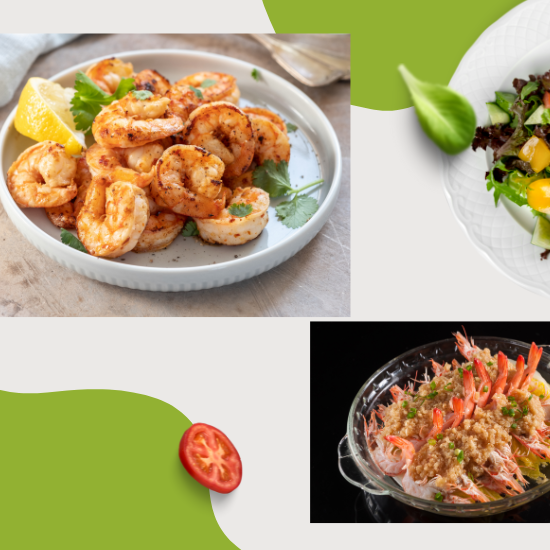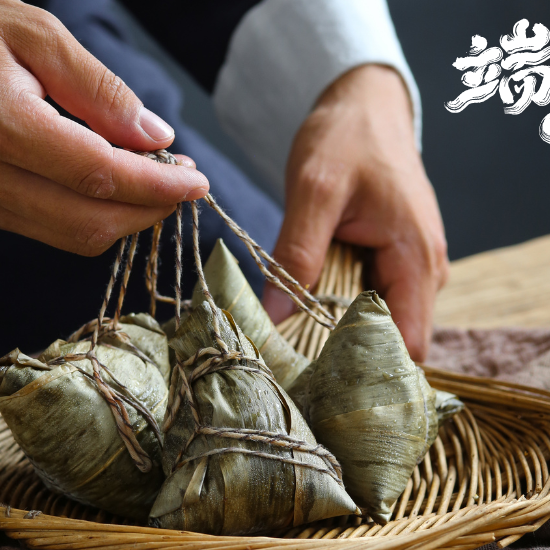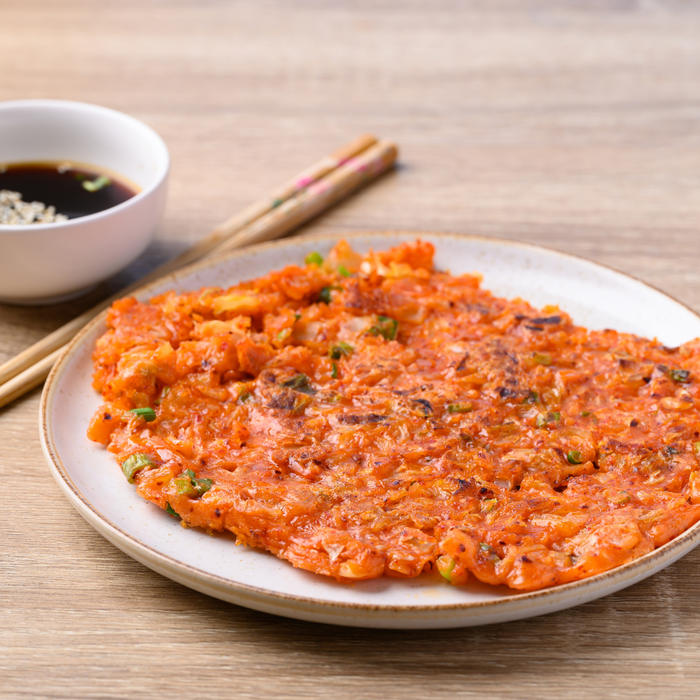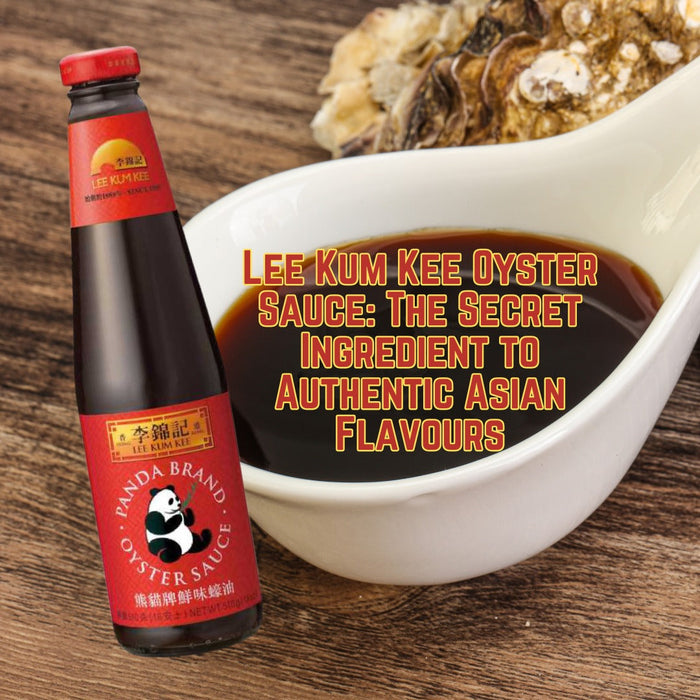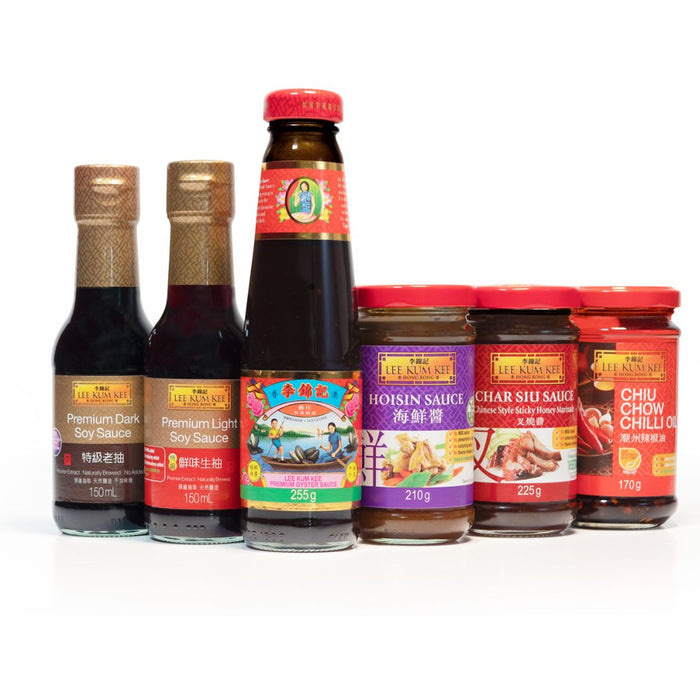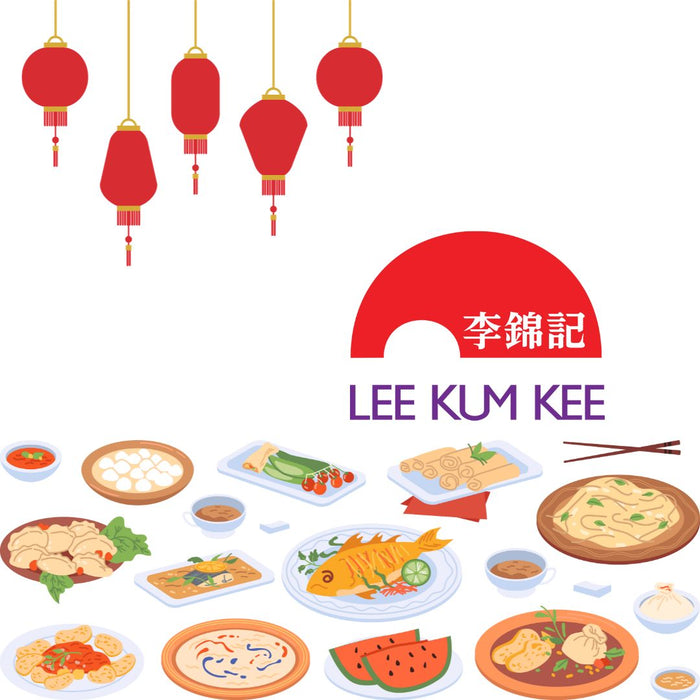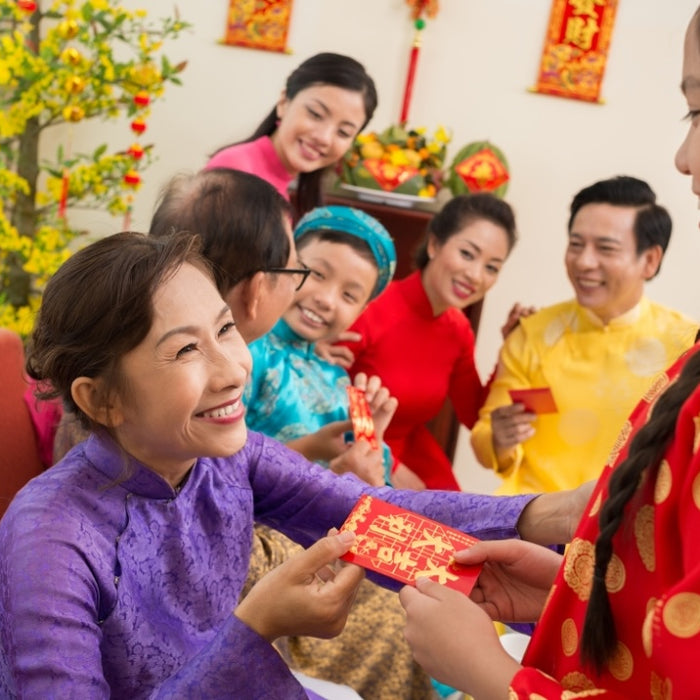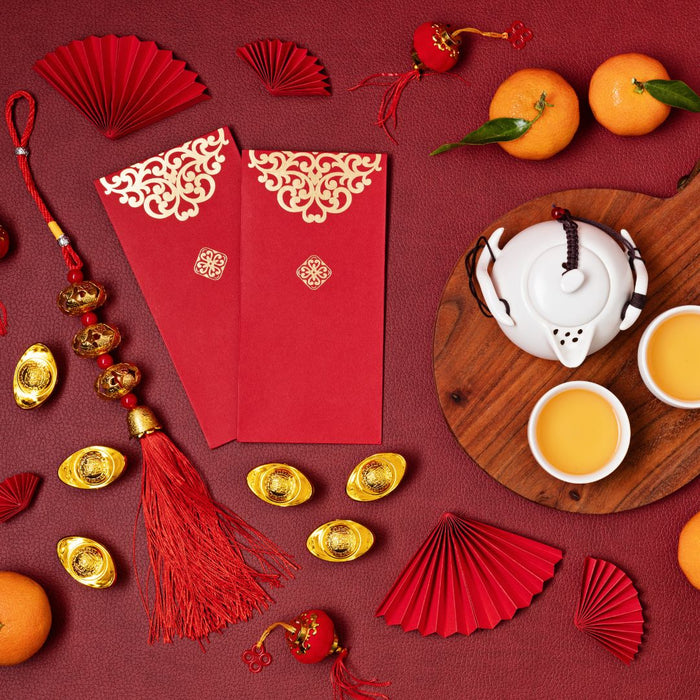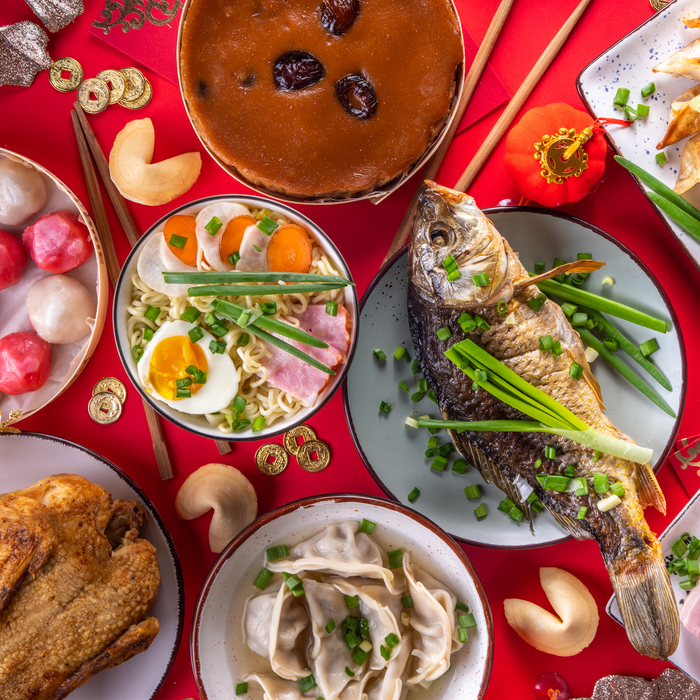Dancing lanterns, soaring dragons, and magnificent fireworks; yes, the Mid-Autumn Festival is here! At the heart of it all lies something small yet immensely significant - the mooncake. These little pastries filled with sweetness hold a lot more than just lotus paste and yolks; they contain moments, traditions, and symbolism deeply rooted in Chinese culture. Join us on a journey tracing back thousands of years, as we explore the symbolic essence of these round delicacies under the silvery luminescence of the full moon. Are you ready to unlock centuries-old secrets with every bite? Let's dive into a world where tradition meets taste, unfolding the mystical story hidden within each mooncake.
Mooncakes have a long history in Chinese culture and are closely associated with the Mid-Autumn Festival, which celebrates family reunions and harvest time. The round shape and filling inside are said to represent togetherness and unity within families and communities. Additionally, the roundness of the cake symbolises completeness and harmony. Many people also see the cake as a sign of prosperity because it was typically eaten during times of abundance after a successful autumn harvest.
The History and Making of Mooncakes
Mooncakes hold a prominent place in Chinese culture and are deeply intertwined with the traditions and legends of the Mid-Autumn Festival. With a history spanning over 3,000 years, mooncakes have become an essential part of this cherished celebration. The origin of mooncakes is still debated, but there are several theories that shed light on their significance.
One theory suggests that mooncakes originated during the early Qing dynasty when Han rebels planned to invade the palace. Knowing that they needed a way to coordinate their efforts without alerting the authorities, they turned to mooncakes. They cleverly baked mooncakes with a coded message stamped on them or hid a slip of paper where the yolk is now. These secretly embedded messages allowed rebels to communicate their plans discreetly and effectively.
Another theory proposes that mooncakes were simply eaten during the Mid-Autumn Festival, but the reasons behind this tradition remain unclear. Mooncakes were considered a symbol of unity and family gathering during this festival, bringing people together under the bright full moon.
Regardless of their origins, the process of making mooncakes requires meticulous skill and attention to detail. Traditional mooncakes consist of a thin pastry shell filled with various delectable fillings. The filling options range from sweet-bean paste, lotus seed paste, and salted egg yolks to more modern variations such as fruit purees, nuts, or even ice cream.
Now that we have explored the rich history behind mooncakes, let's dive into the fascinating realm of mooncake preparation and ingredients.
Mooncake Preparation and Ingredients
Creating these delightful delicacies involves a step-by-step process that demands precision and expertise. Mooncake dough is typically made by combining flour, sugar, oil, and water. This mixture is carefully kneaded until it reaches a smooth texture suitable for shaping.
The fillings vary based on regional preferences and personal taste. Traditional mooncakes often feature lotus seed paste, which is made from dried lotus seeds cooked slowly with sugar and other flavourings. The intricate preparation of this paste gives it a smooth yet slightly grainy texture.
For those who appreciate a savoury twist, there are mooncakes filled with salted egg yolks or meat, such as roasted pork or chicken. These hearty fillings provide a delightful contrast to the sweet pastry shell.
To achieve their distinct appearance, mooncakes are imprinted with intricate designs using moulds with various patterns and symbols. These moulds can depict traditional motifs such as flowers, animals, or Chinese characters that represent good luck and prosperity.
Once shaped and decorated, the mooncakes are then baked until they develop a beautifully golden crust. The aroma that fills the kitchen during this process is synonymous with the arrival of the Mid-Autumn Festival.
Making mooncakes is like creating edible works of art. Each step plays a crucial role in bringing together flavours, textures, and symbolism to create a truly delightful treat that captures the essence of the festival.
- According to a 2018 report by China's Agriculture Ministry, about 280,000 tonnes of mooncakes were consumed during the Mid-Autumn Festival, symbolising the widespread impact of this cultural practise.
- A study by Chen and Wu (2013) suggests that over 80% of Chinese millennial respondents viewed mooncakes as an essential element to celebrate Mid-Autumn Festival, reflecting its continued significance in contemporary Chinese society.
- The Research Group on Economic and Social Changes in East Asia at Columbia University estimates that the mooncake's association with revolution – due to a historical event where rebels allegedly hid messages inside them – is recognised and understood by roughly 60% of China’s population.
- Mooncakes are a traditional delicacy associated with the Mid-Autumn Festival, and their unique appearance and flavour require precision and expertise in their preparation. From the careful kneading of the pastry dough to the selection and creation of flavorful fillings, every step is important in creating an edible work of art that captures the essence of the festival. Mooncakes can be sweet or savoury, featuring a range of flavours from lotus seed paste to salted egg yolks or meat. The intricate moulds used to create designs on the mooncakes represent traditional symbols of good luck and prosperity.
Evolution of Mooncake Designs
Mooncakes have a rich history in Chinese culture, and this is evident not only in their cultural significance but also in their evolving designs throughout the centuries. When examining the evolution of mooncake designs, we can uncover fascinating insights into the changing artistic styles and cultural influences that have shaped these beloved pastries.
Early mooncakes were relatively simple, with a basic round shape and a thin outer crust. These mooncakes were often filled with a sweet bean paste made from ingredients such as red bean or lotus seed. Over time, lunar motifs began to appear on the surface of the mooncakes, reflecting the association between these delicious treats and the Mid-Autumn Festival.
As Chinese society progressed, so too did the artistry behind mooncake design. Intricate patterns and designs emerged, showcasing the craftsmanship and creativity of bakers across different regions in China. Some mooncakes featured delicate floral patterns, while others showcased auspicious symbols like dragons, phoenixes, or immortals, representing good luck and prosperity.
In fact, during the Ming Dynasty (1368-1644), mooncakes became intricately decorated with motifs of flowers, birds, landscapes, and even calligraphy inscriptions. This era marked a peak in artistic expression within mooncake design.
The evolution of mooncake design was not limited to just outward appearances. Different regions began creating unique varieties based on local flavours and preferences. For example, Suzhou-style mooncakes are known for their flaky crusts and indulgent fillings like salted egg yolk and preserved vegetables. Cantonese-style mooncakes are often characterised by their dense texture and diverse fillings such as lotus seed paste, melon seeds, or even savoury ingredients like roast pork.
To better visualise this evolution of mooncake designs:
| Time Period |
Mooncake Designs |
| Ancient Times |
Simple round shape, thin outer crust |
| Ming Dynasty |
Intricate patterns of flowers, birds, landscapes |
| Regional Variations |
Flaky crusts, diverse fillings |
Such regional variations and evolving designs have contributed to the immense popularity and versatility of mooncakes in Chinese culture.
Now that we have explored the historical evolution of mooncake designs, let's delve into the symbolism behind these cherished pastries in Chinese culture.
Symbolism of Mooncakes in Chinese Culture
Mooncakes hold a deep symbolic significance in Chinese culture, particularly during the Mid-Autumn Festival. These tasty treats are more than just a culinary delight; they carry meanings that reflect various cultural beliefs and values.
At their core, mooncakes symbolise reunion and unity. The round shape of mooncakes represents fullness and completeness, reminiscent of the full moon during the Mid-Autumn Festival. This symbolism aligns with the festival's emphasis on family gathering and togetherness.
Just as the full moon brings families together, mooncakes serve as a way for loved ones to share sweet moments and strengthen bonds.
Traditionally, mooncakes were also used as a medium for expressing wishes and blessings. Etchings on the surface of mooncakes often carried messages conveying good fortune, longevity, or even romantic aspirations. These messages further reinforced the idea that mooncakes served as a vehicle for communication and fostering relationships.
Furthermore, the act of sharing mooncakes during the Mid-Autumn Festival extends beyond familial ties. It also signifies goodwill and harmony among friends, colleagues, and even business partners. Mooncakes are exchanged as gifts to show appreciation or to solidify existing relationships.
The symbolism surrounding mooncakes is deeply rooted in Chinese mythology and legends. The origin story of Chang'e, the Moon goddess who resides on the lunar surface according to Chinese mythology, adds another layer of significance to mooncakes' association with the Mid-Autumn Festival.
As Chang'e and her beloved pet jade rabbit are immortalised in folklore, mooncakes serve as a tangible representation of their mythical presence during this auspicious festival.
While mooncakes have historically been associated with positive symbolism, it is noteworthy that interpretations and traditions surrounding these pastries may vary across different regions or families. Some individuals may prioritise the taste and enjoyment of mooncakes over their symbolic meanings, while others may place greater emphasis on the cultural significance.
Mooncakes and Mid-Autumn Festival
Mooncakes have become synonymous with the Mid-Autumn Festival, capturing the essence of this celebrated holiday in Chinese culture. The Mid-Autumn Festival, also known as the Moon Festival, is an important and joyous occasion that takes place on the 15th day of the 8th month of the Chinese lunar calendar. This usually falls in mid-September to early October, when the moon is believed to be at its fullest and brightest.
During this festival, people come together to celebrate the end of the autumn harvest and to express gratitude for a bountiful year. One of the central activities is the sharing and consumption of mooncakes. These delectable pastries are intricately designed and filled with various fillings such as sweet-bean paste, lotus-seed paste, meat, or even salted egg yolk at their centre.
Imagine being part of a Mid-Autumn Festival celebration, surrounded by friends and family, gathered under the gentle glow of lanterns and immersed in laughter and joy. As you pass around mooncakes, eagerly awaiting your turn to taste their rich flavours, you can feel a sense of unity and connexion with centuries of tradition. Each bite serves as a reminder of the collective gratitude for nature's abundance.
| Symbolism |
Significance |
| Round shape |
Completeness and reunion among families |
| Full moon design |
Harmony and unity |
| Lotus-seed filling |
Fertility and prosperity |
| Salted egg yolk |
Symbolises the full moon |
The symbolism behind mooncakes is akin to a beautiful tapestry, woven together with cultural significance. Just like how each thread plays a vital role in creating a masterpiece, every aspect of a mooncake represents an important element within Chinese society.
To truly understand the cultural significance of mooncakes, we must delve into the fascinating tale of Chang'e, the Moon goddess, and how this myth intertwines with the tradition of mooncake consumption.
The Tale of Chang'e and Mooncakes
The legend of Chang'e lies at the heart of the Mid-Autumn Festival and provides a captivating explanation for the symbolism attached to mooncakes. According to Chinese mythology, Chang'e was a young woman who ascended to the moon after consuming an elixir of immortality. She was forced to leave her husband, Houyi, behind on Earth but was granted eternal beauty and youthfulness.
As the story goes, Chang'e resides on the moon accompanied by a jade rabbit. It is believed that during the Mid-Autumn Festival, she descends to Earth, bringing blessings and good fortune. To honour her presence and commemorate her sacrifice, people indulge in mooncakes shaped like the full moon itself.
This tale serves as a reminder of love, sacrifice, and reunion across time and space. The act of consuming mooncakes is not only a gastronomic delight but also a way to pay homage to Chang'e's everlasting presence in Chinese culture.
By understanding the connexion between Chang'e and mooncakes, we gain a deeper appreciation for these delectable treats. As they are shared among loved ones during the Mid-Autumn Festival, they symbolise unity, harmony, and gratitude for life's blessings.
The Cultural Role of Mooncakes
Mooncakes play a significant cultural role in Chinese society, particularly during the Mid-Autumn Festival. The festival itself holds deep historical and cultural roots, making it one of the most important holidays in Chinese culture. It is celebrated on the 15th day of the 8th month of the Chinese lunar calendar, which typically falls in mid-September to early October. The Mid-Autumn Festival marks the end of the autumn harvest and symbolises reunion, gratitude, and prosperity.
One of the key elements of this festival is the sharing and gifting of mooncakes. Mooncakes are round pastries with rich fillings such as sweet bean paste, egg yolk, lotus-seed paste, or even meat. They are intricately designed with decorative patterns on their surface and often come in elegant boxes. These delicacies are not only delicious but also serve as tangible symbols of blessing and good fortune.
Mooncakes are given among family members, friends, and business associates as a gesture to express love, respect, and wishes for a happy future. By exchanging mooncakes, people strengthen their relationships and promote unity within their social networks. During this festive season, it is common to receive beautifully packaged mooncakes from loved ones or business partners as tokens of appreciation.
An example of the cultural significance of mooncakes can be seen in family gatherings during the Mid-Autumn Festival. Families come together to enjoy delicious meals, share stories and laughter while savouring mooncakes. These gatherings provide an opportunity for bonding and reinforcing family ties across different generations.
Furthermore, mooncakes hold symbolic meaning beyond their physical appearance. Their round shape represents completeness and harmony in Chinese culture. Additionally, the roundness can be associated with the full moon during the Mid-Autumn Festival night when families gather to appreciate its beauty. The act of eating mooncakes under the brightness of the moon creates a special atmosphere of unity and reverence.
The cultural role of mooncakes extends beyond China as well. The Mid-Autumn Festival is celebrated in other countries like Japan, Korea, Vietnam, and various Southeast Asian nations. Each culture adds its own unique elements to the festival while retaining the essence of gratitude and reunion.
While mooncakes have become a beloved part of this annual celebration, their origin remains a subject of debate among scholars and historians.
Debates on the Origin of Mooncakes
The exact origin of mooncakes has fascinated researchers for centuries, leading to various theories and speculation. One theory suggests that mooncakes originated during the early Qing dynasty when Han rebels planned to overthrow the ruling Manchu government. Allegedly, they chose the Mid-Autumn Festival night, known as the brightest night of the year, to enact their plan. To spread secret messages and coordinate their actions, they embedded hidden messages within mooncakes or hid slips of paper where yolk is now placed.
However, another theory proposes that mooncakes are simply a traditional food consumed during the Mid-Autumn Festival without any clear historical connexion or symbolic meaning. The debate about whether mooncakes were originally intended to symbolise rebellion or if they were meant solely as festive treats is ongoing.
There is still much research needed to fully unravel the true origin and symbolism behind mooncakes in Chinese culture. With such rich history and significance associated with this iconic pastry, exploring its roots can help deepen our understanding and appreciation for Chinese traditions.
Click to Shop our range of Mooncakes
Read a brief history of Mooncakes
